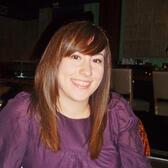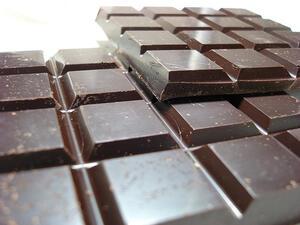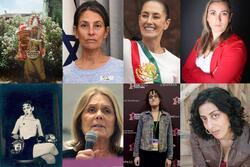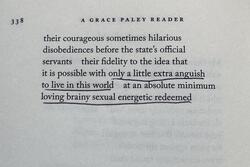Eating Jewish: The Jewish story of chocolate
An image of two bars of chocolate.
Photo by John Loo.
Valentine's Day is not a Jewish holiday. These days it's a secular holiday associated with flowers, candy hearts, and, best of all, chocolate. I wasn't expecting to find a Jewish connection to Valentine's Day, but after looking through my copy of Gil Marks' Encyclopedia of Jewish Food, I discovered the that Jews actually played a significant role in the history of the chocolate trade.
Chocolate is created by fermenting, drying and roasting the beans of the evergreen cacao tree. The Aztecs, in whose culture chocolate played a central role, drank an unsweetened chocolate beverage that they called xocolatl (bitter water). Considered to be an aphrodisiac, they flavored it with red chilies and vanilla.
Although Columbus introduced cocoa beans to Spain, it was Hernando Cortes around 1528 who brought back the knowledge of how they could be used. It was because of this knowledge that chocolate’s popularity began to spread in Europe. Spaniards initially found chocolate too bitter, but after someone thought to add sugar to it, this drink became all the rage among the Spanish royal court. In Spain, this chocolate drink was commonly flavored with vanilla and cinnamon.
The Spanish kept the process of preparing chocolate a secret until the sixteenth century, when an Italian traveler discovered the process and introduced chocolate to Italy around 1606. Shortly after this, Sephardim associated with the Dutch took over the chocolate trade.
Sephardim and Conversos (Jews who converted to Catholicism, particularly in 14th or 15th century Spain and Portugal) living in Central America were able to learn the secrets of preparing chocolate and vanilla from the indigenous people who were willing to share this information. Because of this, Jews were able to enter the chocolate business (which was still seen as exotic) as both producers and middlemen.
Benjamin d’Acosta de Andrade was a Portuguese Converso who returned to Judaism upon reaching Central America. After arriving in French Martinique he established two sugar plantations, along with the first modernized cacao processing plant in the world. Using family connections as well as connections with other Sephardic Jews in Amsterdam and Europe, he began to export cacao. Other Sephardim soon did the same, and chocolate became the island’s biggest export.
After the Jews were expelled from French Martinique, they shifted their chocolate production to Dutch Curacao and English Jamaica. Jewish control of the European chocolate trade declined in the eighteenth century as cocoa production in Africa increased, making production in Central America extremely expensive.
Since Jews were familiar with chocolate and vanilla, these ingredients became a part of Jewish cuisine long before others used them. In 1832 a Jewish apprentice baker in Vienna, named Franz Sacher (at this time many Central European bakers happened to be Jewish) made an important contribution to the world of pastry. He created the famous sachertorte, a dense dry chocolate cake with a thin layer of apricot jam in the middle. More recently, popular chocolate houses were opened by Jewish chocolate makers, namely Elite in Israel and Bartons in New York.
With this in mind, why not make a chocolate dessert this Valentine’s Day? You can not only treat the people you love, but also commemorate the important role Jews have played in the history of chocolate.
I chose this recipe not because it’s chocolatey (and because it’s similar to chocolate lava cake), but because this traditional Livornese dessert was developed when Livornese Jews began trading with Conversos who had opened a chocolate factory in Amsterdam. I can’t see a better reason to get in the kitchen to create a chocolate masterpiece this Valentine’s Day!
Almonds and Chocolate Pudding Cake (Budino di Mandorle e Cioccolata)
Adapted slightly from Joyce Goldstein’s Cucina Ebraica
½ cup unsalted butter
4 ½ ounces bittersweet chocolate
1 ¼ cup chopped blanched almonds or blanched slivered almonds
½ cup sugar
4 eggs separated
Whipped cream for serving (optional)
- Preheat oven to 300 degrees and butter 9 inch round cake pan or eight ¾ cup ramekins.
- Combine the ½ cup butter and chocolate in the top pan of a double boiler placed over, but not touching the hot water in the lower pan. If you don’t have a double boiler, combine the butter and chocolate in a small metal bowl, which you can place over a small saucepan that has been filled with water. Again, you don’t want the bottom of the bowl to touch the water. Heat on medium heat, stirring occasionally, until the chocolate and butter are melted and smooth.
- At the same time, grind the almonds along with the sugar in a food processor. Place the almond mixture in a bowl and whisk in the chocolate mixture and the egg yolks.
- In a separate bowl, beat the egg whites until medium firm peaks form. Stir one third of the egg whites into the chocolate mixture, and then fold in the remaining egg whites until no white streaks remain (do not over mix). Spoon the batter into the cake pan or the ramekins, and place them in a baking pan. Add hot water to the baking pan until it reaches half way up the sides of the cake pan or ramekins. Cover the baking pan with aluminum foil.
- Bake until the center of the cake just set but not wet, about 35 to 45 minutes if using a 9-inch cake pan or about 25 minutes if using the ramekins. Let cool completely on a rack and invert onto a serving platter or onto individuals plates to unmold. Can be served with whipped cream if desired.







